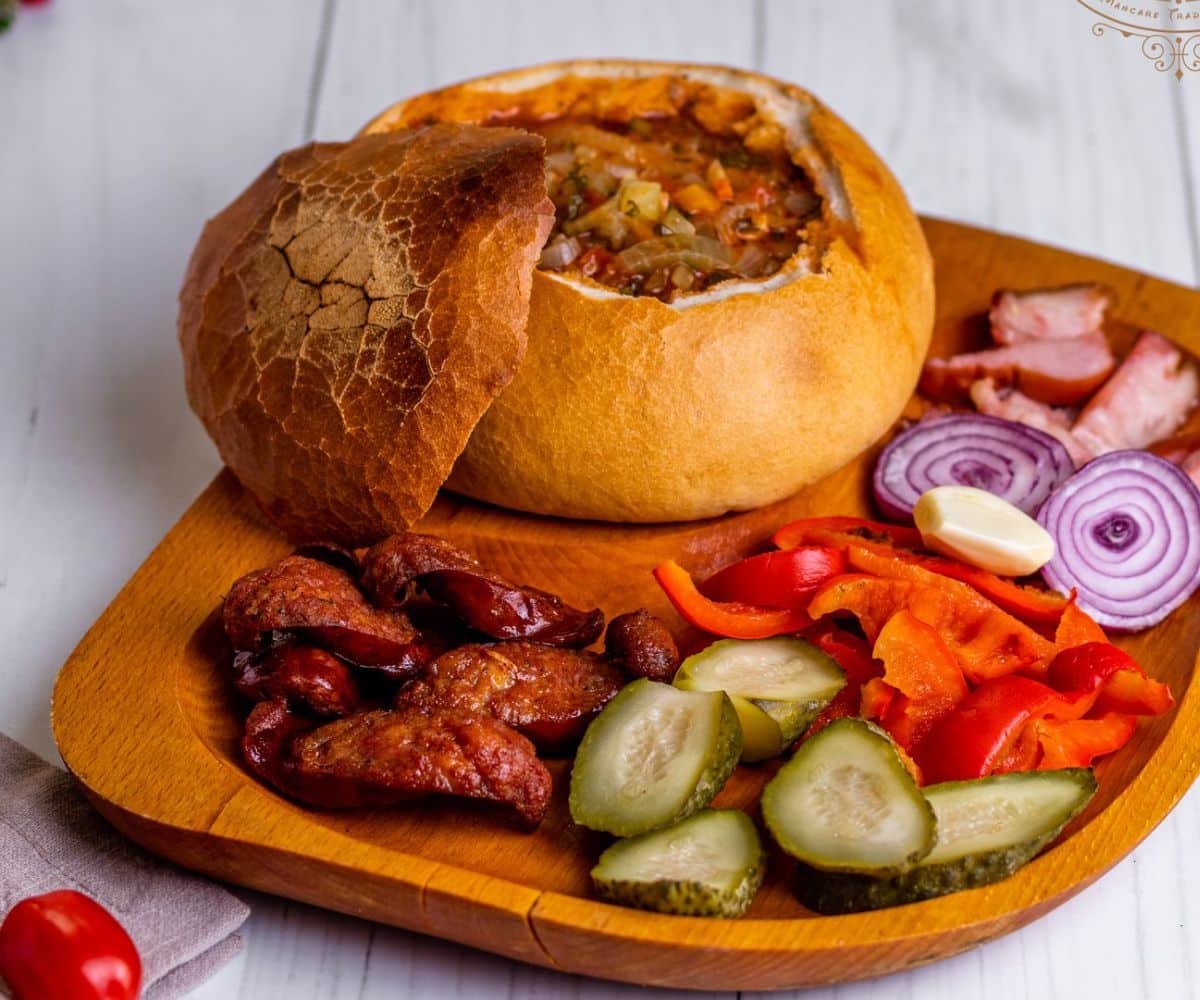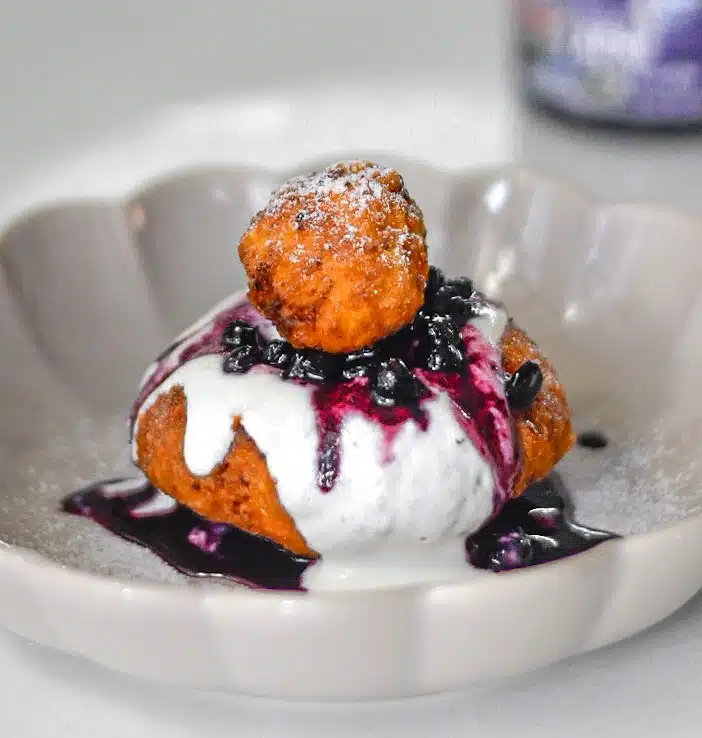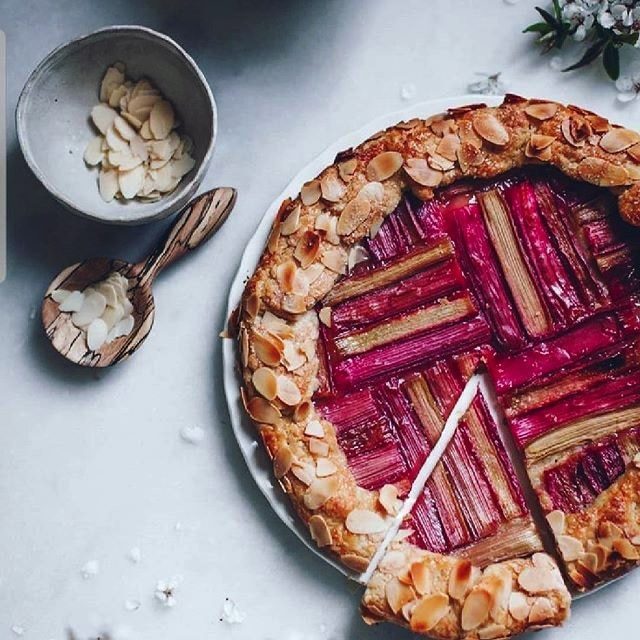Best Foods in Transylvania. A Gastronomic Story

Transylvania is a land of legends, made famous by Bram Stoker with his masterpiece creation, Count Dracula. But the real Transylvania is nothing like the picture painted in books and films – this picturesque region of central Romania is surrounded by spectacular mountains and still blessed with stunning fourteenth-century architecture, gothic churches and medieval fortresses.
Transylvania cuisine is acknowledged as playing a vital part in the gastronomic heritage of Romania which reflects its rich and varied past.
Transylvania was part of or ruled as an autonomous region by many different kingdoms – the Hungarian Kingdom, the Ottoman Empire, and the Austro-Hungarian Empire – which all helped to shape its unique cuisine.
Moreover, the region was home to as many as 750,000 Transylvanian Saxons, a German ethnic group that settled in the region in the mid-12th century. Most Transylvanian Saxons either emigrated to Germany after the Second World War and a second wave left after the fall of the Iron Curtain, but Saxon dishes or their variations are still cooked and loved in Transylvania.

While the Saxons have left, Transylvania continues to be the home of a sizable Hungarian minority. Hungarians have lived in the area for centuries and many dishes you’ll find in traditional restaurants in Budapest will also be referred to as local foods here.
Besides Germans and Hungarians, the Ottomans had a significant influence on the local cuisine, as they did in the rest of Romania and the entire Balkan region.
Rural Traditions
In Transylvania, bread is treated with ceremony and it demands an almost mystical level of respect. Tradition demands certain practices are followed. For example, before cutting bread, the sign of the cross is made in the air (something that Dracula would not appreciate); it must always be placed on a clean white towel, to signify purity; a loaf must never be placed upside down nor must a knife be left in it. And there’s more: leftover bread or crumbs are never discarded because the last slice of a loaf represents luck and power.
Potato bread is perhaps the most popular variety and it’s appreciated for its rich sweet taste, fluffy texture, and long shelf life. When making the dough, part of the wheat flour is replaced with mashed potato. The best potato bread is found in Sibiu and Făgăraș.

1. Soup for the soul

Soups are highly appreciated in all their forms. Sour or sweet, rich or clear, they are like cheese for the French and pasta for the Italians.
In this region estragon (tarragon), is used in soups, soured with sauerkraut or vinegar and thickened with a flour and pork dripping known as “rântaș”.
Some soups are called “ciorbă”, which comes from the Turkish “çorba”, a people renowned for their broths that flooded the conquered nations’ tables.
The most common sweet and clear soups are Supă de găluște (Dumpling Chicken Soup) or Supă de tăiței (Noodle Chicken Soup). One variety of noodle soup is called Fairies Hair, after the thin noodles that are often homemade.
The most widely appreciated sour soups are Beef Tripe Soup, Beans, Ciorbă de lobodă (French spinach sour soup), “Ciorbă ardelenească de cartofi” (Transylvanian potato soup) and “Ciorba de Perișoare” (Meatball soup).

If Bram Stoker’s story sends shivers down your spine, then cumin soup is the perfect comfort food, also to be enjoyed on winter days as a warmer for your body and soul.
This childhood cold remedy is easy to make with few ingredients but packed with flavor. All you need is cumin seeds, sweet paprika, one big onion, bone or vegetable broth, salt and a little flour. It’s served hot with croutons.
2. Tocanita Ardeleneasca cu Cartofi

A king among Transylvanian stews is “Tocăniță ardelenească de cartofi”, which is made with potatoes and either smoked sausage or smoked pork. On fasting days, it’s prepared without the meat, but if you use smoked paprika the taste is not so different from the original and at least as filling.
3. Ciolan afumat cu fasole

A really popular dish is “Ciolan afumat cu fasole”, a rich, earthy stew made with smoked pork leg and beans. It is said that army cooks used to whip this dish up for soldiers and it became so popular that no household is a stranger to its aroma. It’s equally sought after among commuters, professional drivers, and tourists as it’s both filling and tasty.
The pride of the Ardeal region, this dish has become a staple, served in large quantities on National Day (together with pickles) to people celebrating outside during festivities.
A similar dish with the same ingredients but more broth is “ciorba”, often served in a fancy way: inside a specially- baked bread crust in the shape of a bowl with the inside scooped out. It is typically accompanied by red onions and țuică, a traditional Romanian spirit.
4. Clatite Brasovene

In Brașov we find “clătite brașovene”, the heavenly savory pancake that carries the town’s name.
The story behind this dish is that a German family had to feed numerous children, so the parents took moussaka and used it as a filling for pancakes, which were fried in the pan before serving.
This popular tourist delight is now made with beef and mushrooms and the folded pancakes are fried in a batter with eggs and breadcrumbs. Delicious!
5. Aprikosenkuchen

After partying till dawn, or just a hard day’s sightseeing, why not regain your strength over a cup of fragrant coffee and a slice of this luscious sweet treat.
Aprikosenkuchen, known by this foreign name, is a beautifully flavored apricot sponge cake that most Germans know how to make by heart.
The classic recipe is simple but the result tastes so complex: the butter is creamed with sugar, vanilla, eggs, and lemon zest that will later incorporate the remaining dry ingredients (flour, baking powder, and salt).
The batter goes into a buttered pan with apricot halves placed on top facing down and the whole thing is put in the oven to golden nicely. Devilish delicious!
6. Henklesh (Lichiu)

Henklesh or Lichiu is a luscious Saxon dessert with a base of leavened dough made with flour, warm milk, butter, one egg, sugar, and yeast. Some henklesh recipes are made with seasonal fruits, especially during the summer and fall months when local fruits are in season.
The delicious topping is made by mixing sour cream with eggs, sugar, vanilla, and butter, and sprinkling the whole concoction with sour cherries, plums or grapes. Traditionally it’s baked in bread ovens over a wood fire and is a particular favorite around Easter time, when eggs are plentiful.
7. Gomboti

“Găluști cu prune” (sweet dumplings with plums) is an old recipe passed down through the generations. It’s known as “gomboți”, “gombóc” or “knédli” among the Hungarian population and “Knödel” in Germanic parts of Romania.
Whole stoned plums are wrapped in a potato-based dough to form a ball. They are then boiled and rolled through breadcrumbs, sugar, and cinnamon. Although plums are at their juicy best in late summer and early autumn, this dish is made year round. And due to the natural sweetness of the fruit, only a little added sugar is used. So you can eat a lot without feeling guilty!
8. Papanasi

You might know this dessert from the previous post about popular foods in Romania, but if you don’t, you have to try it!
“Papanași” is a perfectly balanced sweet and sour treat consisting of two donuts made from cottage cheese, semolina, and sugar and topped with sour cream and fruit preserve, usually blueberry.
Of Romanian/ Moldovan origins, it’s a particular favorite in Transylvania that appeals to both the eyes and the taste buds!
9. Rhubarb Pie

Rhubarb Pie first appeared in a collection of recipes under the name of New System of Domestic Cookery by Maria Eliza Rundell, in 1807 in the UK and later translated into German, which is how the recipe was brought to Transylvania.
This is how rhubarb evolved from being used as just a medicinal plant to becoming a mouthwateringly sour ingredient that contrasts beautifully with sweet flavors.
Containing high levels of calcium, rhubarb is good for strong teeth. If you find yourself visiting Transylvania, also look out for rhubarb jam and rhubarb soup.
10. Cozonac

Cozonac is a sweet bread, filled with ground walnuts that’s made every Easter and Christmas. It’s one of those must-haves or should I say “must-smell” aromas from the holiday bouquet of fragrances and it is a definite crowd pleaser.
Not so easy to make, though, cozonac cu nucă” is the pride of every housewife, and the key to your mother-in-law’s heart. It’s omnipresent on festive tables, and a popular addition to gift baskets of Transylvanian foods, for a very good and tasty reason.
11. Kürtőskalács

Kürtőskalács are another type of sweet bread and a specialty of the Hungarian minority in this part of Romania. They aren’t made at home anymore but are very popular at fairs and festive events.
Their name comes from their hollow cylindrical shape and the fact that traditionally they were baked over an open flame, with the dough wrapped as a spiral on a wooden skewer. The finished product is a delectable, sugar-glazed treat.
For more Hungarian specialties, check out our story on popular Hungarian foods.
12. Zacusca

Before cutting through the meat, let’s take a quick look in the pantry to discover a treasure hidden in a dusty jar: “zacuscă”, which is an eggplant chutney.
This uniquely rich and flavorful vegetable spread is obtained from a three-way process of roasting, baking, and boiling eggplants, together with onions and peppers, and then seasoning the mixture with salt and black pepper. All you need for the best breakfast or ultimate snack is a slice of fresh, crusty bread.
13. Mititei

The smell of grilled “mici” or “mititei” tickles the nostrils just as the grass covers the earth and the sun warms up the air. Aptly named “little ones”, these rolls of minced meat and spices are the delight of every barbecue and picnic but are also a star among street foods.
Some say that in old times “mici” were made not with baking soda as they are today, but with crème fraiche, which ferments into sour cream after being incorporated into the meat mixture.
This special ingredient, that unfortunately is not used widely anymore having been replaced with a less natural one, makes the consistency very light. Regardless, we guarantee that if you taste one, you’ll be back for more!
14. Sarmale

Resembling stuffed cabbage leaves but in a deconstructed way is another famous Transylvanian dish – “Varză a la Cluj”.
It contains the same ingredients as sarmale but has a different construction. The dish is built with layers of sour cream, cabbage leaves, pork, and rice mixture ending with a layer of cabbage and sour cream. Everything stays in the oven for at least half an hour before being served. The ultimate nutritious comfort food!
15. Varza a la Cluj

Resembling stuffed cabbage leaves but in a deconstructed way is another famous Transylvanian dish – “Varză a la Cluj”.
It contains the same ingredients as sarmale but has a different construction. The dish is built with layers of sour cream, cabbage leaves, pork, and rice mixture ending with a layer of cabbage and sour cream. Everything stays in the oven for at least half an hour before being served. The ultimate nutritious comfort food!
16. Balmus and Bulz

Foreigners might already know that polenta is a Romanian staple food but there are different ways in which polenta meets the dish: Balmuș and Bulz.
“Balmuș” is something that shepherds prepare for special occasions or when hosting guests. First, they melt butter in a pan, then add some cheese and cornmeal, and stir over a slow fire until it’s done. The result is more than you can expect from such simple ingredients.
A variation on the same theme is “Bulz”, which can be found at every farmers’ fair and restaurant, but the best is made in peasants’ houses, where they’ll be happy to amaze you with their traditional food. Delicious “bulz” was whipped up out of necessity on cold winter days with ingredients already found in the pantry.
The simple polenta takes the form of a ball that covers sheep cheese and sometimes eggs and bacon. It is either cooked on an open fire while aromas are developing inside, or finished in the oven.
The best place to enjoy these golden treasures is în the villages of the Mărginimea Sibiului region, around the historic city of Sibu, which holds the honorary title of European Gastronomic Region, awarded by the International Institute for Gastronomy, Culture, Arts, and Tourism.
Related: Most Popular Romanian Desserts



We are Transylvanian saxons from senndorf Romania, we immigrated to the US in 1951 I was a baby. I grew up eating zukam Wasser lashka, I can’t find anything on the history of it I just know it is very very old we ate it on Good Friday that’s all we could eat
Currently lasti have the meaning of homemade pasta like tagliatelle or so. Still a thing in northern Transylvania. Made with grinded poppy seeds or walnutswith sugar.
Nice article but I have an observation: you included rhubarb pie, a dish I never heard in my part of Transylvania where I lived 36 years, but you didn’t included “plăcinte”, fried dough usually filled with cheese and dill or topped with cheese and garlic. I don’t think there’s a house in Transylvania where this dish is not cooked at least once a week, I would say plăcinte in Transylvania are the equivalent of pizza in Italy.
Sounds wonderful.
Do you have a recipe for “plăcinte?”
My paternal ancestry is Transylvanian-Saxon…
I love trying traditional dishes.